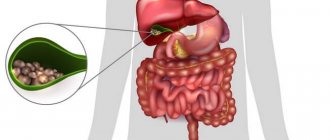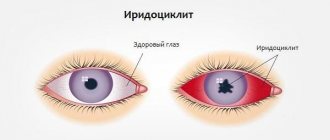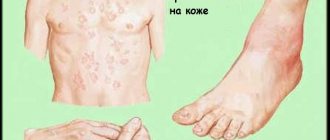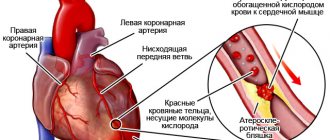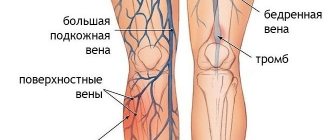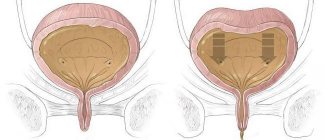The gallbladder is a small, hollow, pear-shaped organ located under the liver. It concentrates and stores bile, a liquid necessary for the digestion of fats in the small intestine. For gallbladder cancer, it is important to start treatment on time, since the disease can be asymptomatic and is often detected too late. Cancer can affect nearby organs and tissues, making the disease much more difficult to cure.
Malignant tumors of the gallbladder are a fairly rare phenomenon; they most often develop in women, in 7 out of 10 cases.
Our company, medical service "Tlv.Hospital", offers services for organizing the diagnosis and treatment of gallbladder cancer in Israel:
1. Selection of doctors and clinics, individual approach taking into account all wishes, comfortable conditions of stay.
2. Carrying out all procedures as quickly as possible.
3. Moderate prices thanks to contracts with medical centers for the provision of medical care at wholesale prices.
4. Providing a “second opinion” (getting advice from another specialist), after completing treatment, maintaining contact with the doctor.
Risk factors
Gallbladder cancer in gastroenterology is classified as a rare malignant neoplasm. According to the nature of the morphological changes, primary cancer in 80% of cases occurs in the form of adenocarcinoma, in which the tumor is represented by glandular cells. Less commonly, neoplasms in the gallbladder develop as classic carcinoma (consisting of epithelial cells), squamous cell or mucinous cancer. The pathology is often combined with carcinoma of the biliary and extrahepatic bile ducts.
Specific risk factors that increase the likelihood of developing cancer are unknown. In medicine there is a list of reasons leading to oncogene activation:
- complicated heredity - in the presence of family cases of cancer of the gallbladder or other organs of the gastrointestinal tract, the risk of developing pathology increases to 60%;
- age factor - the vast majority of cases of cancer pathology are recorded in people over 50–60 years old;
- prolonged contact with carcinogens;
- hazardous working conditions, work in metal smelting and rubber production;
- previous parasitic infections (opisthorchiasis);
- chronic inflammatory diseases of the gastrointestinal tract (nonspecific ulcerative colitis, Crohn's disease);
- unhealthy diet with abuse of fatty, smoked foods, food with preservatives and chemical additives;
- alcohol and nicotine abuse;
- weakened immune system.
An important role in the mutation of organ cells belongs to background pathologies - polyps and polycystic gallbladder, calcification (calculi in the biliary tract), biliary cirrhosis, sclerosing cholangitis (catarrhal process in the liver), carriage of salmonella or past salmonellosis. In 60% of cases, gallbladder cancer appears with long-term chronic cholecystitis. A history of gallstone disease increases the likelihood of developing cancer to 40%.
How is the presence of the disease detected?
Several methods can be used to identify a Klatskin tumor:
- Percutaneous transhepatic cholangiography - With this procedure, doctors obtain a complete x-ray of the bile ducts. To carry out the procedure, the patient is prohibited from eating and drinking 6 hours before the procedure, and at the same time he is given sedatives. The procedure begins with the injection of a local anesthetic into the right area of the abdomen, then a thin needle is passed through the skin into the bile ducts, through which the dye is injected. Then an x-ray is performed, which shows whether there are any abnormalities in the functioning of the biliary tract. The entire procedure to control the accuracy of the needle is performed using an ultrasound machine. Before and after percutaneous transhepatic cholangiography, the patient is prescribed antibiotics to prevent the possibility of infection.
- Angiography. This type of diagnosis is prescribed if the duct is located near the main blood vessels of the liver. Using angiography, it is determined whether the vessels are affected by the ongoing tumor. It is performed as follows: a thin tube is inserted into the inguinal artery, through which a specialized dye is passed, which then passes into the artery.
- Endoscopic retrograde cholangiopancreatography is also used when this cancer occurs; it is applicable for tumor obstruction. Performed to more accurately determine the duration of pathological processes after performing percutaneous transhepatic cholangiography.
- Magnetic resonance therapy is one of the most optimal methods for studying a tumor. It allows you to determine the exact location and visualize the structure of the liver vessels.
- Biopsy is the most effective method. Only it allows you to accurately determine the presence of a tumor, its structure and the nature of the tissue. For this purpose, a puncture is taken from the damaged area, which is then examined by microbiological analysis. This procedure is performed in conjunction with percutaneous transhepatic cholangiography.
Stages of oncopathology
Gallbladder cancer is divided into stages based on the TNM classification system.
- Tis, or stage zero - cancer in a pre-invasive form, mutated cells are localized in the inner layer of the organ, divide intensively, destroying healthy tissue.
- T1, or stage 1 - the malignant neoplasm begins to grow into the mucous layer of the gallbladder (stage T1a) and into the muscle tissue (T1b). The cancerous tumor has an oval shape, is located on the wall of the organ, protruding into the cavity.
- T2, or stage 2 - the cancerous tumor grows to the serous layer, the tumor extends beyond the muscles of the organ. The visceral peritoneum is affected, but there is no infiltration into the liver.
- T3, or stage 3 - the neoplasm grows into the serous layer, radiates to the gastrointestinal tract, and affects the liver. At stage 3, metastases begin to form, which is caused by damage to the hepatic vessels, from where cancer cells are spread throughout the body through the bloodstream.
- T4, or stage 4 - invasive liver damage reaches more than 20 mm, the tumor grows into the stomach, pancreas, duodenum.
- N0 - there is no metastatic lesion in regional lymph nodes.
- N1 - lymph nodes in the common or paravesical bile duct, in the portal vein are affected.
- N2 - metastases reach the head of the pancreas, duodenum, and celiac artery.
- M0 - no distant metastases.
- M1 - distant metastases identified.
Symptoms of cholangiocarcinoma
Since malignant tumors in the liver are difficult to diagnose, it is necessary to listen to your body for early detection of Klatskin disease.
The tumor may be characterized by symptoms such as:
- the main symptom of the disease is obstructive jaundice;
- constant feeling of itching;
- nagging pain in the upper right part of the abdomen;
- loss of appetite and, as a result, sudden weight loss;
- physical exhaustion characteristic of tumor formations;
- elevated temperature with Klatskin tumor also occurs;
- changes in the color of urine and stool (urine darkens and stool becomes lighter).
Symptoms appear unexpectedly and progress. Obstructive jaundice occurs in 90 cases out of 100 and is one of the common signs of a disease such as Klatskin tumor. Reviews from patients sometimes vary. Some patients note the addition of itching, pain and sudden weight loss. Such manifestations are due to the late stages of malignant tumors. But others feel virtually no abnormalities in their health or attribute the symptoms that appear to other ailments.
Clinical manifestations
At stage zero, gallbladder cancer does not manifest itself, the clinic is practically absent. Identification of the initial stages of oncopathology occurs purely by chance, during histological analysis of organ tissues taken during surgery from patients with cholecystitis. The first signs of cancer begin to appear as the tumor grows larger.
The early period of the clinical picture of gall cancer is called pre-icteric. The main symptoms that trouble the patient in the pre-icteric period include:
- swelling in the epigastric zone;
- heaviness and feeling of fullness in the right side under the ribs;
- attacks of nausea;
- dull pain in the right hypochondrium;
- bowel disorder - from diarrhea to constipation;
- severe weakness;
- low-grade fever;
- sudden weight loss.
The duration of the clinical period without manifestations of jaundice directly depends on the location of the malignant neoplasm and the proximity to the bile ducts. If the tumor has reached the tail or body of the pancreas, the duration of the pre-icteric period is longer. When the tumor grows into the head of the pancreas and extrahepatic ducts, the period without signs of obstructive jaundice is reduced.
As cancer progresses, symptoms of cancer become more clinically significant:
- the appearance of yellowness of the skin and eye sclera, which indicates the entry of bile into the systemic bloodstream;
- temperature rise to 38°;
- lightening of stool and darkening of urine;
- moderate itching of the skin;
- lethargy, adynamia, lethargy;
- a feeling of bitterness in the mouth;
- anorexia;
- the pain becomes permanent.
If a cancerous tumor compresses the bile ducts, abdominal ascites and purulent lesions of the gallbladder (empyema) appear. At stages 3–4, peritoneal carcinomatosis develops and emaciation progresses. Occasionally, cancer progresses at lightning speed, the main manifestation being severe intoxication and septic damage to the blood.
What is the gallbladder?
The gallbladder is a small, hollow, pear-shaped “bag” (like a bladder) about 8 cm long and about 2.5 cm wide. It lies under the right side of the liver, in the upper abdomen. Bile accumulates in it. Bile is a fluid produced by the liver.
Bile helps break down (digest) fats in the small intestine (intestines). When you eat fatty foods, the fats are broken down (digested) in the stomach and intestines.
The gallbladder is not an integral part of the body. A person can live without it, that is, after it is taken out, you will still be able to digest food.
Diagnostics
The long asymptomatic course of cancer pathology leads to the fact that in 70% of cases the disease is detected at a late stage, when the cancer is inoperable. Diagnosing gallbladder cancer in the early stages is difficult for a number of reasons:
- absence of specific signs of pathology;
- similarity of the clinical picture with other diseases of the biliary system - cholecystitis, cirrhosis;
- anatomical features of the location of the gallbladder - the organ is located behind the liver, which makes it difficult to use digital examination and visual methods.
A comprehensive examination for suspected cancer in the gallbladder begins with examination of the patient and palpation of the abdominal area. A digital examination reveals an enlarged liver protruding beyond the edge of the costal arch and an enlarged gall bladder. Sometimes it is possible to palpate infiltrates in the peritoneal cavity. A typical sign of a malignant tumor is an enlarged spleen.
When diagnosing cancer, a number of laboratory tests are required:
- liver tests - a special study with a biochemical blood test to determine the preservation of the functional abilities of the liver in terms of detoxification activity; when performing liver tests, readings of bilirubin (including fractions), alkaline phosphatase, albumin, prothrombin time are revealed;
- identification of a specific marker CA 19–9, an increase in the concentration of which reliably indicates the course of oncological processes in the organs of the digestive system.
Ultrasound examination of the gallbladder and liver is indicated among high-precision instrumental methods in case of suspected oncology. Ultrasound reveals organ sizes that are significantly larger than normal, which indicates active tumor growth. In case of cancer, ultrasound shows unevenly compacted bladder walls and heterogeneity of structure. Additionally, liver metastases can be visualized. To clarify the stage of cancer and the intensity of the metastasis process, they resort to extended sonography of the peritoneum.
To confirm and clarify the diagnosis, in addition to ultrasound, additional instrumental diagnostics are performed:
- cholecystography - an x-ray of the gallbladder with contrast allows you to assess the condition of the walls of the organ and the presence of pathological processes;
- percutaneous transhepatic cholangiography is an invasive method of X-ray contrast study of the condition of the bile ducts;
- Diagnostic laparoscopy is necessary to assess the situation regarding the operability of the tumor and the effectiveness of the operation.
Patient complaints
This disease is very rarely diagnosed by doctors. Successful treatment depends on many factors, but the most significant is the timing of the patient's visit to the doctor. If a person turns to a specialist on time, treatment in most cases is successful, but if the disease is advanced, successful results with a high degree of probability should not be expected. Typically, Klatskin's tumor is diagnosed during an examination due to other acute or chronic disorders of the digestive tract.
In other cases, patients come to a gastroenterologist for help with just such a problem. The most common patient complaints in this case:
- heaviness in the side;
- general weakness of the body and fatigue;
- vague and unpleasant taste sensations in the mouth;
- malaise.
Oncology itself is not so easy to diagnose. The fact is that Klatskin's tumor - obstructive jaundice, as it is also called - has symptoms similar to various diseases, such as the liver parenchyma or biliary tract.
Treatment tactics
When choosing the optimal treatment tactics, it is necessary to take into account the stage of oncological pathology, the activity of the metastasis process, the age and general condition of the patient. In situations where cancer is diagnosed after its resection due to cholelithiasis, the operation performed brings positive results. When a tumor grows into neighboring organs, surgery is often impossible due to close connections with the intestines and pancreas.
In the initial stages of cancer (T1-T2) and in locally advanced cancer, a simple or extended cholecystectomy (removal of the pathologically altered gallbladder) is indicated. For gallbladder cancer with single metastases to the liver (stage T3), in addition to cholecystectomy, they resort to resection of the affected lobe of the liver; in addition, they can remove the duodenum and pancreas.
In case of inoperable stage of cancer, palliative surgical interventions are indicated, the purpose of which is to alleviate negative symptoms and prolong the patient’s life. Often they resort to endoscopic stenting - installing tubes in the bile ducts to normalize the outflow of bile. Sometimes it is necessary to form an external fistula to remove bile.
Additional measures after surgery and for inoperable cancer include:
- chemotherapy - a course of chemical medications that kill cancer cells; chemotherapy can reduce pain and normalize the condition, but has many side effects (malaise, vomiting, loss of appetite);
- radiation therapy is a method using high-energy X-rays, the purpose of which is to coagulate cancer cells and suppress tumor growth;
- Radiation therapy with sensitizers is used in combination with radiation, which increases the positive outcome of treatment and prolongs life by several years.
Traditional medicine against cancer pathology
Traditional medicine suggests treating gall cancer using herbal medicine. However, it is important to understand that traditional methods refer to auxiliary therapy and do not replace the main treatment. In the fight against gallbladder cancer, the following recipes are especially popular:
- infusion of corn silk - add 300 ml of boiling water to 10 g of raw material and cook for half an hour. Drink 20 ml of decoction per appointment, twice a day, the full course lasts 45 days;
- black henbane tincture - add 500 ml of vodka to 20 g of raw material, leave for 14 days; drink 2 drops before meals, once a day;
- a mixture of radish juice and honey in equal proportions is consumed 50 g per dose twice a day, before meals.
General information about the disease
Despite the fact that modern medicine has acquired a lot of useful tools with which it is possible to identify and promptly diagnose the disease, oncological diseases of the liver and pancreas have been little studied. In particular, this state of affairs concerns the extrahepatic segment of the digestive organs. Certain risk groups are most susceptible to Klatskin tumors. The first is children under 5 years of age who do not suffer from pathologies of the gastrointestinal tract. The second is people who have crossed the 60-year mark and have significant disorders in the functioning of the biliary tract.
Oncological diseases can arise for a variety of reasons, but modern medicine determines the following: toxic waste released into the atmosphere in large quantities; stress and other nervous disorders; environmental pollution; bad habits. In addition, the formation of a Klatskin tumor can also be caused by poor nutrition:
- use of genetically modified foods;
- alcohol abuse;
- consumption of large amounts of preservatives and food additives.
The disease appears as a result of a complex of problems that give rise to somatic diseases. They ultimately form neoplasms of various types. If you do not pay attention to the symptoms and start the disease, it progresses quickly and causes significant discomfort.
Forecast and preventive measures
The prognosis for survival with gallbladder cancer is unfavorable. Compared to tumors of other organs, gall cancer in the vast majority of cases is confirmed in unresectable stages. The impossibility of excision of a cancerous tumor, multiple metastases in neighboring organs and lymph nodes do not provide a chance for a favorable outcome - the death of patients occurs within 4-6 months. Information about survival after tumor removal surgery is contradictory - up to 40% of patients live another 5 years.
There is no specific prevention of the disease. To reduce and weaken the effect of negative factors that provoke the development of cancer pathology, it is important to follow basic rules: promptly treat diseases of the digestive tract, adhere to a healthy lifestyle, maintain an optimal weight, avoiding obesity.
Survival prognosis
Statistics are based on observations of patients over a period of 5 years. This does not mean that after diagnosis a person has only 5 years to live. Each case is individual, and it is difficult to predict how cancer will develop. There is a chance that the process will suddenly slow down, but there is still a chance that the cancer will begin to progress rapidly. Official statistics provide the following data;
- Zero stage – 80%;
- First – 50%;
- Second – 28%;
- Third – 8%;
- Fourth – 4%.
Currently reading: Technique for laparoscopy of the gallbladder
Of course, the result depends on the methods of treatment, the qualifications of specialists, and the financial capabilities of the patients. Residents with low financial income who cannot afford even a high-quality comprehensive examination have less chance of survival.
Causes of biliary tract cancer
The main causes of biliary tract cancer are damage to the lining epithelium, which are associated with age, infections, helminthiasis, and impaired bile outflow.
A number of factors under which a tumor forms are as follows::
- • aging – age 50–70 years;
- • viral hepatitis (contagious; the pathogens that cause hepatitis B and C are transmitted through blood; type B can be infected through sexual contact, but they are not transmitted by airborne droplets);
- • heredity (autoimmune hepatitis, primary biliary cirrhosis);
- • bad habits, for example, smoking and alcoholism (including women’s, which is practically incurable);
- • helminthiases (fascioliasis, giardiasis, schistosomiasis, ascariasis);
- • carcinogens (asbestos, paints and varnishes);
- • some drugs that affect the kinetics of the biliary tract, causing cholestasis;
- • pathologies and diseases of the biliary tract (stones, sclerosing cholangitis, biliary tract cysts, congenital anomalies).
The etiology does not exclude psychosomatics, that is, the appearance of cancer against the background of stress and anxiety.
User Stories
Valentina, Moscow:
“I want to tell my story. My sister complained of pain on her right side all her life. Typically, attacks occurred after physical activity or spicy and fatty foods. I drank “No-shpu”, “Allohol”, brewed choleretic herbs. The pain went away, there were no other signs.
The first time we became alarmed was when an attack of severe pain developed in the garden, so that we even had to call an ambulance. They examined him at the hospital. The doctor said that there were signs of inflammation, several pebbles in the bladder, and advised them to be removed. He said that complications can develop with age: jaundice, liver inflammation. My sister refused and decided to take pills and follow a diet. And again it went the same way - sometimes it hurts, sometimes everything is fine. After some time, I began to notice that I was getting tired quickly, I was in no mood, and I began to lose weight. After he eats, he starts vomiting. We noticed that the skin had become yellow.
She was already retired. I had an ultrasound and tests and was sent to an oncologist. After several more examinations, a diagnosis of gallbladder cancer was made. The oncologist said that the stage is advanced and the condition can only be alleviated by installing a tube for the outflow of bile. They began to prepare for surgery, but his condition worsened greatly, so they did not operate. After 1.5 months, my sister died. She was already unconscious.
It turns out that the doctors are telling the truth - since something went wrong, you need to pay attention. It seems like there’s nothing wrong with it, but you can overlook life.”
Svetlana, Kaluga:
“My mother suffered from hepatitis as a child and often complained of pain. He works bend over or eats something fatty or spicy - and immediately feels bad. She worked at a factory and underwent medical examinations. An ultrasound revealed stones in the gall bladder and sent me to a surgeon. On the doctor’s advice, we decided to operate endoscopically to avoid complications. The bubble was removed. A biopsy revealed cancer. After discharge, they began to be examined. No nodes were found in other organs. We completed a course of chemotherapy. Of course it's hard. But we are glad that we listened to the doctor’s advice, and my mother underwent surgery. She is doing much better now and I am sure she will live for many more years.”
Prevention
Prevention is seen as a way to avoid the influence of adverse factors on human health. This article is about the gallbladder. But it would be a mistake to think that just eating right is enough.
Human life is an endless process of interaction with the external environment, society, nature, and modern technologies. All this together has an impact on his well-being: physical, mental, social.
Taking responsibility for your life processes is the best way to stay healthy and happy for as long as possible.
Types of biliary tract cancer
The typology of biliary tract cancer takes into account not only its location, but also metastasis, clinical and cytological picture. The stage of the oncological process is determined according to the TNM classification.
According to cytology, histological conclusion, types are distinguished:
- • adenocarcinoma - most common;
- • squamous cell – makes up 15% of all types;
- • glandular (ring cell, colloid);
- • undifferentiated.
Types of bile duct cancer by location:
- • intrahepatic;
- • hepatic portal zones (Klatskin tumor);
- • extrahepatic.
According to growth form:
- • diffuse-infiltrative;
- • nodal;
- • papillary.
Forecast for life
The prognosis for CHC is very unfavorable. The average survival time after diagnosis is 24 months (with intrahepatic cholangiocarcinomas it is 18-30 months, with hilar cholangiocarcinomas it is 12-24 months). Most patients die within the first year after diagnosis is verified.
The five-year survival rate remains at 10%. Data from the World Health Organization indicate an increase in mortality with VCHG and a decreasing trend for VCHG and DCHG.
Terminal states
As the body fights the disease, it gradually depletes its resources.
Malignant processes affect the activity of the central and peripheral nervous system. Consciousness is gradually depressed. The patient lies with his eyes closed and does not respond to questions. Liver damage is accompanied by hepatic coma - a complete lack of consciousness.
Suppression of the functions of the nervous system negatively affects blood circulation and breathing.
Blood circulation in organs is disrupted. The skin turns gray and cold, sticky sweat appears. The limbs feel icy to the touch. Blood pressure decreases and heart rhythm is disturbed. The pulse becomes weak and thread-like.
There is shortness of breath (difficulty in inhaling or exhaling), breathing becomes more frequent, and a pathological rhythm appears. Urine formation is impaired. Specific symptoms appear: nausea, vomiting, bloating, lack of stool.
Liver damage is accompanied by blood clotting disorders. Patients develop complications such as gastrointestinal bleeding and bleeding gums.
States bordering between life and death are called terminal. There are four such states:
Clinical death lasts on average 5-6 minutes. Then irreversible changes occur, which are called biological death.

